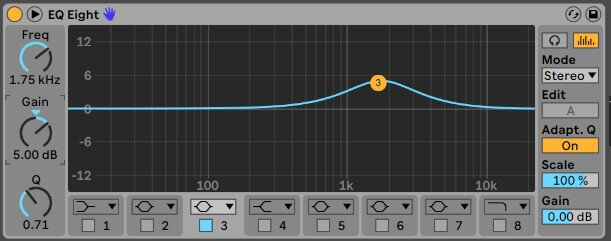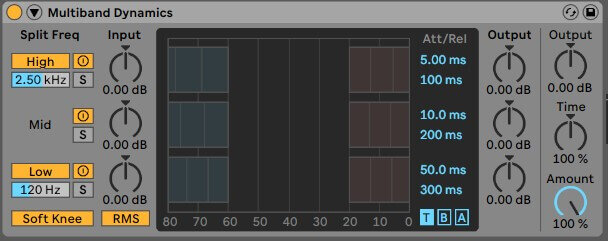Grammy-winning mix engineer Andrew Scheps, is one of the biggest recording and audio engineers in the industry today. Andrew has a background playing the trumpet and completed a Recording Engineering Degree at the University of Miami.
His career began interning at two studios in New York and California, before becoming a synclavier specialist working on the road with big acts like Michael Jackson and Stevie Wonder and it only went up from there.
Moving to LA in 2001 he began working closely with another incredible producer Rick Rubin (stay tuned for another Industry Legend Spotlight Blog) where he made news mixing the Red Hot Chili Pepper’s album entirely in analogue.
Since then he has worked with a star-studded list of artists including Adele, Black Sabbath, Metallica, Justin Timberlake, Jay-Z, U2, Iggy Pop and more!
Since then Andrew Scheps again ruffled industry feathers by going the opposite direction and making the decision to mix entirely “in the box”, that is, without any analogue gear, entirely on a computer. Despite such a drastic change, Andrew still maintains the top quality sound and music philosophy that got him success originally.
To be such an incredible and experienced engineer and still being willing to share his insights is really inspiring to us at Jony Studios, and it is our pleasure to share some of our favourite tips he’s shared over the years.
*With all mixing tips, there is no one size fits all. These recommendations come from one of the best mixing engineers working with some of the best musicians and recording engineers therefore if your samples don’t work quite as well don’t worry! Using your own ears to find the sound that YOU love is much more important than copying a legend exactly. Even Andrew Scheps won’t have the exact same settings or plugins on any two projects*
Vocal Mixing
Vocal mixing can be one of the most intimidating aspects of a new song. Regardless of if it is your voice, a friend or a client, the vocals are (almost) always front and centre in the mix, and you just know they have to be perfect.
Just getting your vocals to cut through and be in front is the first step, and Andrew Scheps, known for using a lot of parallel processing in his work, has just the ticket. This tip features only techniques “in the box” so it’s very easy to recreate at home even if you’re just starting out.
The first chain is very simple:
First
Cut low end at around 100hz with a very wide shelf cut of less the 3.0db and boost the high end at around 8khz of around 3.0db
Second
Heavily compress the high end with a threshold around -36.0db above 1khz with a soft knee and ratio around 4.0/1. Your attack and release should be quite high as well, around 10ms and 120ms respectively
Third
Boost the low end with another eq at 100hz at around 2.5db and cut a little top end at 10khz, around 1.5db
With this technique, a vocal can cut through even the more dense mixes with clarity. Using just the first two steps in the chain, you are essentially compressing just the high and mid of the vocal chain. These areas greatly affect the presence and comprehensibility but also add in a lot of air, or harshness. In order to level the vocal out again and remove the harshness while maintaining clarity, the last step of the vocal chain eq’s a slight low pass, low boost filter leaving you with a hyper-compressed but pleasant and stable vocal.
Bass Mixing
As always, the first step to getting a guitar/bass tone that you like is making a great sample. Recording and playing a great take is essential, there is a lot you can do while mixing, but fixing a poor sample will always turn out worse than polishing a great one.
Again, Scheps is a big fan of parallel processing to produce the sound he wants. In the case of an aggressive and fast bass, it is a common misconception that heavy distortion is what brings the energy. Scheps argues that the attack, or actual sound of the physical strings (in a recording) provides much more character, rhythm and energy. If you’re looking for the feeling that bands like Green Day get with their punk bass, try this parallel processing technique.
First
The first chain is a simple eq boosting the mids by 5-7dbs around 1.75khz
Second
The next independent chains are where the distortion really comes in (you didn’t think we forgot about it did you?). Using several different amps, or characters also help to fill out the booming low end of a good bass section, therefore layering these should be the next step.
Third
Finally, all three should be fed through a final processing chain, first drive some of the low end with a multiband compressor. Follow that with another multiband compressor, this time slightly leveling the whole frequency range, and finally top it off with an eq bringing up some more low end at around 700hz boosting around 3.0db
Guitar Mixing
Guitar’s are also unique in that they are often a focus of a track alongside the vocal. Especially in the case of rock or metal, a heavy distorted power chord or triad can often fight with the vocal for space in a mix, another difficult challenge for any mixing engineer.
For Andrew Scheps, compressing and eq are also essential, but the final solution in some cases is panning.
To start, it’s important to remember that certain plugins, or analogue gear for that matter, are meant to be used around a certain frequency. There are a very large amount of vocal processing plugins including enhancers, compressors and eqs. For the exact same reason why your guitars and vocals might clash, those same plugins might work just as well on guitar! Guitars occupy a very similar frequency space to vocals therefore some of the vocal processing tips gone over earlier can also work here!
Another thing to remember is that guitars inherently are an extremely resonant instrument. Here more than ever it is essential to get a great take because trying to take out too much fuzzy distortion during the mixing process can be difficult when so many other clean frequencies and the sound of the pick are up there as well.
Parallel compression can again really help mixing guitars without changing their sound too much and there really isn’t any single chain or tip here.
First
Boosting some low end around 600hz slightly can really bring the tone of a guitar to life, but again be sure not to get too heavy with this as it can significantly change the energy of a take.
Second
Using very minimal parallel compression next is necessary in some cases to level the sound again but again, too much will be very detrimental. As stated regarding bass, the attack of an instrument is very responsible for the energy groove or aggression (depending on what you’re going for) so a flat guitar part can just feel lifeless.
Once you have all this down with a solid take and the energy you want it’s time to position it in the mix. Especially with a busy or heavily distorted guitar part you might again notice the guitar and vocals fighting with each-other. While more eqing can help, Andrew Scheps has also come up with a unique solution.
You guessed it, panning. An unbalanced mix is far from pleasant but by panning the guitar part, or other mid range heavy element, you leave more room for the star of the show, the vocals to shine through. Using this technique is very tricky and should only be used when absolutely necessary however using some reverb panned to the opposite side will greatly help keep imbalances to a minimum. Try panning other elements including backing vocals opposite the main guitar part as well to make sure the mix has a perfect balance at the end of the day.
How to prepare for a session
Preparation is another one of those things that most professionals would just say takes practice. Getting ready for your first, fifth or even 100th recording session can always be stressful.
Take it from the words of Andrew Scheps himself from an interview with Your Audio Solutions
“Preparation.
You can never do enough preparation.
You need to have everything in your head and written down. For example, which microphones to use, placements, which preamps to use and where to put them all so you can get to the vocals really easily.
Where to put the musicians and one of the most important things, their headphones. How are they going to hear and see each other because that is the biggest thing to get a good recording - making the band feel comfortable. If they can’t hear what’s going on they can’t play. Every single aspect of that has to be right.
Show up early, be completely ready to go, so if someone walks in and sits down by the drum kit you are ready to hit record.
You can’t decide everything in advance because the session goes how the session goes. But it’s good to have planned out as much as possible beforehand so you can react to the chaos and still be able to record. No matter what changes. For example, if they decide to record the drums in the control room, you can do that and make it work because you have everything under control. “
Conclusion
By taking just a few minutes to hear Andrew Scheps speak about his craft it is so clear just how passionate he is. It is that kind of energy that greatly inspires us at Jony Studios, and I hope it inspires you too. All these tips and many more are available on the internet through countless interviews, videos and online courses, mostly for free! We would like to thank Andrew Scheps for his great contribution to the industry, not least of which through the sharing of his expertise but also through his work on some of the most famous, and well-loved albums in the past 20 years.
If you are interested in hearing more music, mixing, and marketing tips be sure to keep up to date with us on social media and keep checking our website for more blogs like this. In addition, check out our services page for more information on what we can do for your music career.
- By Erik Steiner
If you need further help creating your own music, we offer music production services that will help you elevate your sound and bring your song to life!
We look forward to being a part of your success.
Contact us here to get started.











